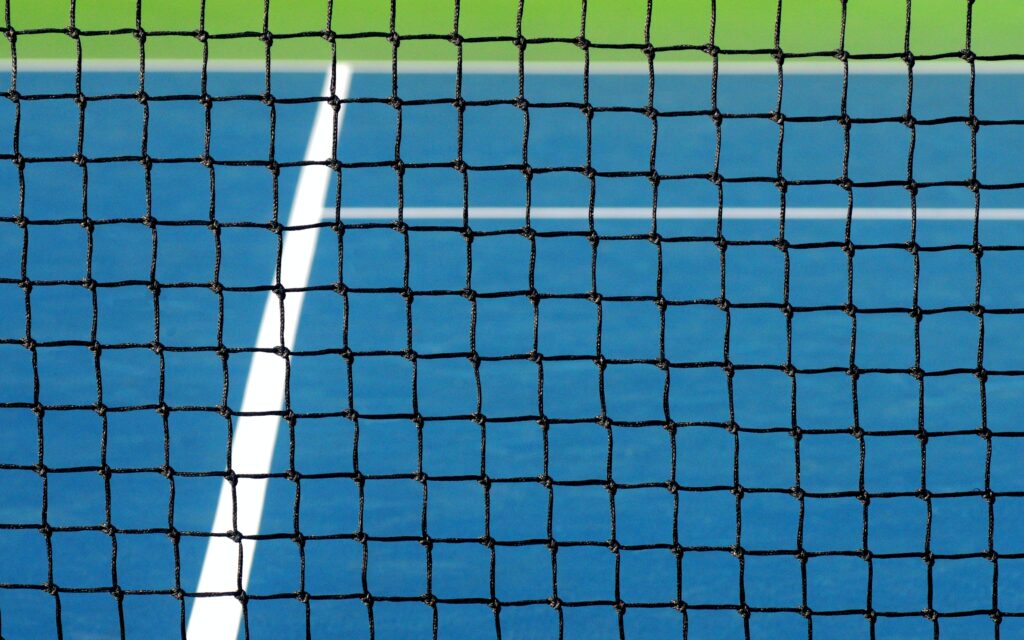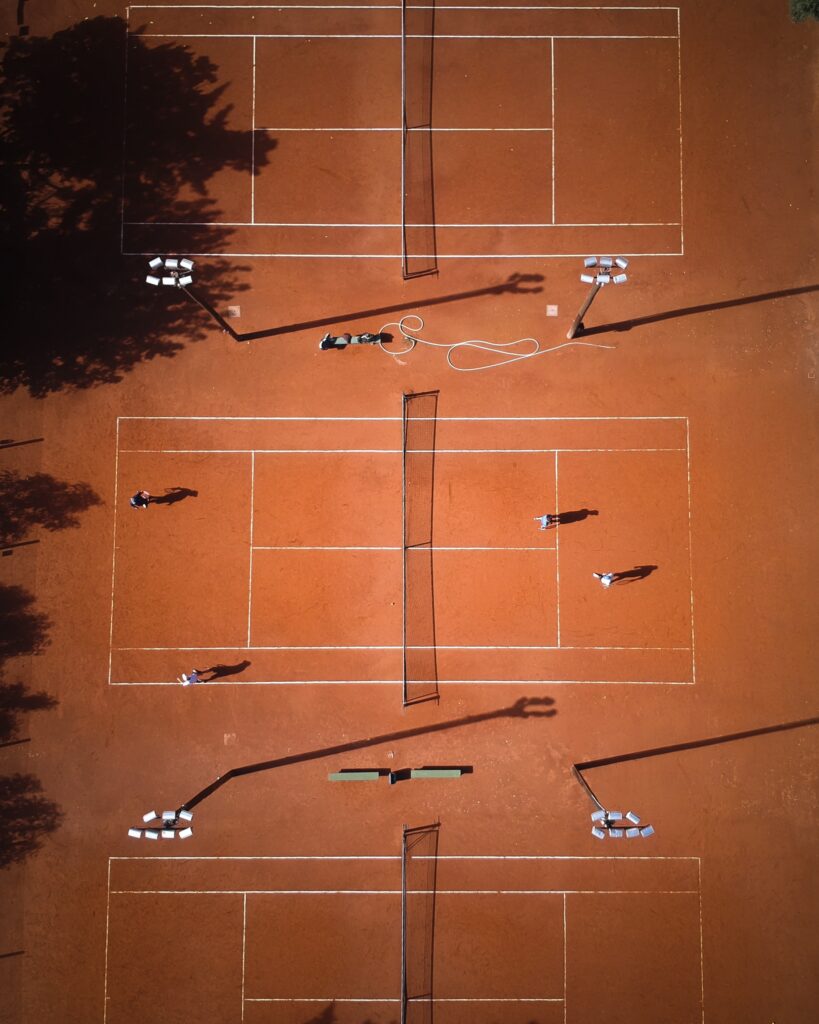In the exciting world of tennis, it’s important for kids to develop a diverse range of strokes to excel in the sport. From powerful serves to precise volleys, mastering various tennis strokes can greatly enhance a child’s game. Whether it’s the classic forehand or the tricky backhand slice, learning these techniques can set young players on the path to success on the tennis court. Discover the different types of tennis strokes that kids should learn and watch their skills soar to new heights.
Forehand
The forehand is one of the most important strokes in tennis, and it is essential for kids to learn the correct technique to develop a strong and reliable shot. Here are the key elements of the forehand stroke:
Grip
The grip is the foundation of a good forehand shot. For kids, the most common grip used is the Eastern grip, where the base knuckle of the index finger is placed on the third bevel of the tennis racket handle. This grip allows for a balanced and controlled swing.
Preparation
Before executing the forehand shot, it is important to have proper preparation. This includes positioning your body sideways to the net, with your non-dominant side facing towards the net. Keep your knees slightly bent and your weight evenly distributed on both feet.
Execution
To execute a forehand shot, start by bringing your racket back and keeping your non-dominant hand on the throat of the racket. As the ball approaches, rotate your upper body towards the net and transfer your weight from your back foot to your front foot. As you swing forward, use your dominant arm to lead the shot and follow through with your racket finishing high and across your body.
Follow-through
The follow-through is the final phase of the forehand shot. After making contact with the ball, continue your swing and follow through with your racket across your body. This helps with control and power. Remember to stay balanced throughout the entire shot and maintain good footwork.
Backhand
The backhand stroke is another essential shot that kids should learn in tennis. There are two common types of backhand strokes: the one-handed backhand and the two-handed backhand. Let’s look at the key elements of each:
One-handed Backhand
The one-handed backhand requires a different grip compared to the forehand. Kids should use the Eastern backhand grip, where the base knuckle of the index finger is placed on the third bevel of the racket handle. The grip should be slightly modified for more control and stability.
Two-handed Backhand
The two-handed backhand is a popular choice for kids as it provides more stability. The grip for the dominant hand should be similar to the one-handed backhand, while the non-dominant hand should use an Eastern forehand grip. This grip combination helps maintain stability and control.
Preparation
Similar to the forehand, proper preparation is crucial for a successful backhand shot. Position your body sideways to the net with your non-dominant side facing towards the net. Keep your knees slightly bent and your weight evenly distributed on both feet.
Execution
To execute a backhand shot, start by bringing your racket back, keeping both hands on the grip. As the ball approaches, rotate your upper body towards the net and transfer your weight from your back foot to your front foot. Swing forward and make contact with the ball, using both arms to guide the shot. Finish the swing with both arms extending forward and across your body.
Follow-through
The follow-through for the backhand shot is similar to the forehand. After making contact with the ball, continue your swing and follow through with your racket across your body. Maintain balance throughout the shot and focus on proper footwork.

Serve
The serve is the most crucial shot in tennis, and it is important for kids to develop a consistent and powerful serve. Here are the key elements of a successful serve:
Grip
The grip for the serve is crucial for generating power and control. The Continental grip is commonly used for serves. Encourage kids to practice holding the racket with a relaxed grip and focus on placing the base knuckle of the index finger on the second bevel of the handle.
Stance
The stance for the serve can vary depending on the player’s comfort and style. The common stances are the platform stance and the pinpoint stance. In the platform stance, both feet are parallel and shoulder-width apart. In the pinpoint stance, the back foot is positioned slightly behind the front foot.
Toss
A well-executed toss is essential for a successful serve. Encourage kids to practice a consistent and controlled toss. The toss should be slightly in front and above the hitting shoulder, allowing for maximum reach and power.
Swing motion
The swing motion for the serve involves several key phases. Start with the racket behind your back and your non-dominant hand holding the throat of the racket. As you initiate the serve, bring the racket up and behind your head. As you toss the ball, explode upward and forward with your racket, making contact with the ball at the highest point. Extend your arm fully and finish with the racket over your non-dominant shoulder.
Follow-through
The follow-through for the serve is crucial for generating power and control. After making contact with the ball, continue your swing and follow through with your racket over your non-dominant shoulder. This helps with accuracy and balance.
Volley
Volleying is an important skill in tennis, especially for kids who are looking to play more aggressively at the net. Here are the key elements of a successful volley:
Grip
For volleys, a continental grip is commonly used. This grip allows for greater control and maneuverability at the net. Encourage kids to practice holding the racket with a relaxed grip and focus on placing the base knuckle of the index finger on the second bevel of the handle.
Preparation
Proper preparation is crucial for a successful volley. Position your body sideways to the net with your non-dominant side facing towards the net. Keep your knees slightly bent and your weight evenly distributed on both feet. Hold the racket ready in front of you, with your non-dominant hand supporting the grip.
Execution
To execute a volley, watch the ball closely and position yourself near the net. As the ball approaches, use a short swing and block the ball back with a firm wrist. Keep your racket head slightly in front of your body for better control and accuracy.
Footwork
Footwork is essential for volleys, as it allows you to move quickly and efficiently at the net. Encourage kids to practice small, quick steps to adjust their position and reach the ball effectively.
Follow-through
The follow-through for volleys is shorter compared to groundstrokes. After making contact with the ball, continue your swing slightly forward, but not as pronounced as with groundstrokes. This shorter follow-through allows for better control and positioning at the net.

Lob
The lob is a defensive shot that can be highly effective in certain situations, allowing kids to regain control of the point. Here are the key elements of a successful lob:
Grip
For lobs, a continental grip is commonly used. This grip allows for greater control and maneuverability when hitting the ball high and deep. Encourage kids to practice holding the racket with a relaxed grip and focus on placing the base knuckle of the index finger on the second bevel of the handle.
Preparation
Proper preparation is crucial for a successful lob. Position your body sideways to the net with your non-dominant side facing towards the net. Keep your knees slightly bent and your weight evenly distributed on both feet. Hold the racket ready in front of you, with your non-dominant hand supporting the grip.
Execution
To execute a lob, watch the ball closely and position yourself towards the back of the court. As the ball approaches, use a longer swing and scoop the ball with an open racket face. Aim to hit the ball high and deep towards the opponent’s baseline.
Tactics
Lobs can be used strategically to change the rhythm of the game and force your opponent to move backwards. Encourage kids to use lobs sparingly and intelligently, looking for opportunities to disrupt their opponent’s positioning and regain control of the point.
Drop Shot
The drop shot is a deceptive shot that can catch opponents off guard and disrupt their rhythm. Here are the key elements of a successful drop shot:
Grip
For drop shots, a continental grip is commonly used. This grip allows for greater control and delicate touch when aiming to place the ball close to the net. Encourage kids to practice holding the racket with a relaxed grip and focus on placing the base knuckle of the index finger on the second bevel of the handle.
Preparation
Proper preparation is crucial for a successful drop shot. Position your body sideways to the net with your non-dominant side facing towards the net. Keep your knees slightly bent and your weight evenly distributed on both feet. Hold the racket ready in front of you, with your non-dominant hand supporting the grip.
Execution
To execute a drop shot, watch the ball closely and position yourself near the baseline. As the ball approaches, use a short swing and gently tap the ball, aiming to land it close to the net. The key is to generate enough backspin on the ball to make it drop quickly and stay low.
Tactics
Drop shots are most effective when used strategically, catching your opponent off guard and forcing them to sprint forward to retrieve the ball. Encourage kids to use drop shots sparingly and tactically, aiming to disrupt their opponent’s positioning and capitalize on the element of surprise.

Overhead
The overhead shot, also known as the smash, is an offensive shot used to finish points at the net. Here are the key elements of a successful overhead shot:
Grip
For overhead shots, a continental grip is commonly used. This grip allows for greater control and power when hitting the ball overhead. Encourage kids to practice holding the racket with a relaxed grip and focus on placing the base knuckle of the index finger on the second bevel of the handle.
Preparation
Proper preparation is crucial for a successful overhead shot. Position yourself near the net and keep your eye on the ball as it approaches. Get in position by moving quickly and aligning yourself with the ball’s trajectory.
Execution
To execute an overhead shot, watch the ball closely and position yourself near the net. As the ball reaches its peak, take a small jump and raise your racket above your head. Use a forceful swing to hit the ball downward with power and precision.
Follow-through
The follow-through for overhead shots should be pronounced and extended. After making contact with the ball, continue your swing and follow through fully, allowing your racket to finish over your shoulder. This follow-through helps generate power and control.
Slice
The slice is a shot that imparts backspin on the ball, causing it to skid low and bounce unpredictably. Here are the key elements of a successful slice shot:
Grip
For slice shots, a continental or Eastern backhand grip is commonly used. This grip allows for greater control and maneuverability when hitting the ball with backspin. Encourage kids to practice holding the racket with a relaxed grip and focus on placing the base knuckle of the index finger on the second bevel of the handle.
Preparation
Proper preparation is crucial for a successful slice shot. Position your body sideways to the net with your non-dominant side facing towards the net. Keep your knees slightly bent and your weight evenly distributed on both feet. Hold the racket ready in front of you, with your non-dominant hand supporting the grip.
Execution
To execute a slice shot, watch the ball closely and position yourself near the baseline. As the ball approaches, use a longer swing and brush the racket across the back of the ball, creating backspin. Aim to keep the ball low and make it skid on the surface upon landing.
Follow-through
The follow-through for slice shots is usually shorter compared to groundstrokes. After making contact with the ball, continue your swing but with a shorter extension. This helps maintain control and accuracy when hitting the ball with backspin.
Tactics
Slice shots can be used strategically to change the pace and height of the ball, forcing your opponent to adjust their positioning and timing. Encourage kids to use slice shots tactically, aiming to keep their opponent off balance and create opportunities for offensive shots.
Smash
The smash is a powerful shot used when the ball is high in the air and near the net. It allows kids to take control of the point and finish it emphatically. Here are the key elements of a successful smash:
Grip
For smashes, a continental grip is commonly used. This grip allows for greater control and power when hitting the ball overhead. Encourage kids to practice holding the racket with a relaxed grip and focus on placing the base knuckle of the index finger on the second bevel of the handle.
Preparation
Prepare for a smash by positioning yourself near the net and keeping your eye on the ball as it approaches. Get in position by moving quickly and aligning yourself with the ball’s trajectory.
Execution
As the ball reaches its peak, bend your knees and jump slightly to gain elevation. Raise your racket above your head and swing forcefully, making contact with the ball at the highest point. Aim to hit the ball downward with power and accuracy.
Follow-through
The follow-through for smashes should be pronounced and extended. After making contact with the ball, continue your swing and follow through fully, allowing your racket to finish over your shoulder. This follow-through helps generate maximum power and control.
Topspin
The topspin shot is a powerful and effective stroke that allows kids to generate depth and control in their shots. Here are the key elements of a successful topspin shot:
Grip
For topspin shots, a semi-western or western grip is commonly used. These grips allow for greater wrist action and spin generation. Encourage kids to practice holding the racket with a relaxed grip and focus on placing the base knuckle of the index finger on the second bevel of the handle.
Preparation
Proper preparation is crucial for a successful topspin shot. Position your body sideways to the net with your non-dominant side facing towards the net. Keep your knees slightly bent and your weight evenly distributed on both feet. Hold the racket ready in front of you, with your non-dominant hand supporting the grip.
Execution
To execute a topspin shot, watch the ball closely and position yourself near the baseline. As the ball approaches, use a slightly longer swing and brush the ball with a slight upward motion. Focus on generating topspin by contacting the ball with a slightly closed racket face and brushing upwards.
Follow-through
The follow-through for topspin shots should be smooth and fluid. After making contact with the ball, continue your swing and allow your racket to follow through high and across your body. This follow-through generates topspin and helps control the trajectory of the ball.

